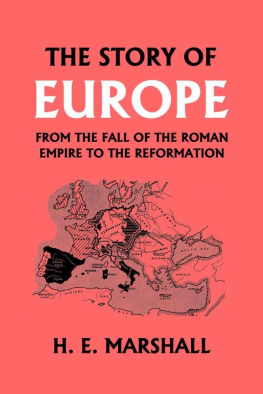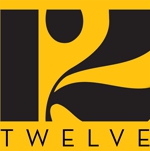Copyright 2021 by Patrick Wyman
Jacket design by Richard Ljoenes. Jacket illustration by Albrecht Drer ( Knight, Death and the Devil , 1513). Cover copyright 2021 by Hachette Book Group, Inc.
Hachette Book Group supports the right to free expression and the value of copyright. The purpose of copyright is to encourage writers and artists to produce the creative works that enrich our culture.
The scanning, uploading, and distribution of this book without permission is a theft of the authors intellectual property. If you would like permission to use material from the book (other than for review purposes), please contact permissions@hbgusa.com. Thank you for your support of the authors rights.
Grand Central Publishing
Hachette Book Group
1290 Avenue of the Americas, New York, NY 10104
grandcentralpublishing.com
twitter.com/grandcentralpub
First Edition: July 2021
Grand Central Publishing is a division of Hachette Book Group, Inc. The Grand Central Publishing name and logo is a trademark of Hachette Book Group, Inc.
The publisher is not responsible for websites (or their content) that are not owned by the publisher.
The Hachette Speakers Bureau provides a wide range of authors for speaking events. To find out more, go to www.hachettespeakersbureau.com or call (866) 376-6591.
Library of Congress Cataloging-in-Publication Data
Names: Wyman, Patrick, author.
Title: The verge : Reformation, Renaissance, and forty years that shook the world / Patrick Wyman.
Other titles: Reformation, Renaissance, and forty years that shook the world
Description: First edition. | New York : Twelve, 2021. | Includes bibliographical references and index.
Identifiers: LCCN 2021006600 | ISBN 9781538701188 (hardcover) | ISBN 9781538701171 (ebook)
Subjects: LCSH: EuropeBiography. | EuropeEconomic conditions15th century. | EuropeEconomic conditions16th century. | EuropeHistory1492-1517.
Classification: LCC D106 .W96 2021 | DDC 940.2/10922dc23
LC record available at https://lccn.loc.gov/2021006600
ISBNs: 978-1-5387-0118-8 (hardcover), 978-1-5387-0117-1 (ebook)
E3-20210602-JV-NF-ORI
Contents
For my parents
Explore book giveaways, sneak peeks, deals, and more.
Tap here to learn more.
Europeans of this period utilized a bewildering array of coins and currencies. Gold, silver, and copper of various types and denominations all played roles in everyday economic activity, as did units of account, currencies that effectively existed only in accountants ledgers. In the short term, these currencies value fluctuated constantly, and playing the shifting exchange rates from place to place was one of the central activities of banking and finance. Over the period covered in this book, however, their value was stable enough to get a handle on their relative worth.
The (quite literal) gold standard for currency throughout the later Middle Ages and early modern period was the Venetian ducat. It weighed 3.56 grams and was nominally 24 carats fine. By the 1490s, it was the baseline for all the other major gold coinages of western Europe. The Florentine florin was essentially equivalent (3.54 grams), as were the fine gold cruzados of Portugal and the excelentes of Castile and Aragn (23.75 carats, but 3.74 grams), and the English half-noble and French gold cu (3.5 grams). The exception was the Rhine or Rhenish gulden, an alternative standard for much of northern and central Europe, which was 19 carats fine and a bit lighter. A ducat was worth about 1.82 Rhinegulden.
The ducat and florin equivalent are the major currencies this book employs, but several others warrant a mention. The first of these are maravedis, the silver coinage, or more often money of account, employed in Spain. One ducat was worth about 375 maravedis. Another is English shillings and pounds, a silver-based system; around the year 1500, one ducat was worth 4 shillings 7 pence (20 shillings to a pound, 12 pence to a shilling). The last is the Ottoman ake (plural aka), also a silver coin, 60 of which were equal to a single ducat.
1 ducat =
1 florin
1.82 Rhinegulden
375 maravedis
4 shillings 7 pence (4 s /7 d )
60 aka.
Relative Worth Around 1500
1. A master mason working in Bruges at this time made about 11 Flemish groten per day. At an exchange rate of 6575 groten to the ducat, it took that mason six or seven days of work to make a single ducat.
2. The average daily wage for an arquebusier serving in the standing forces of Spain between 1500 and 1530 was 40 maravedis. At 375 maravedis to the ducat, it would take about ten days of work to make a single ducat. For a pikeman, it was 30 maravedis, or two ducats for twenty-five days of work.
3. At the siege of Vienna in 1529, Suleiman the Magnificent offered 1,000 aka per man to his Janissaries as an inducement to an assault on the city, almost 17 ducats. That sum was in addition to their regular wages.
4. Around 1500, an unskilled day laborer in Florence made 10 soldi per day. A florinthe equivalent of a ducatwas worth 140 soldi, so it took fourteen full workdays for a day laborer to make a florin or ducat.
5. In 1505, English merchant John Heritage bought 42 tods of wool, a total weight of 1,176 pounds, for 23 2 s . That came out to about 64 ducats.
6. In Venice in 1508, printer Aldus Manutius spent more than 200 ducats per month to keep his print shopstaffed by about fifteen employeesin operation.
7. Swabian mercenary Gtz von Berlichingen and his brother were paid 2,000 Rhinegulden by Margrave Friedrich of Brandenburg for their military services as men-at-arms, with retainers serving under them, after a lengthy campaign. That is about 1,100 ducats.
8. In 1492, Christopher Columbuss expedition cost 2 million maravedis in total. That comes out to about 5,300 ducats.
9. Jakob Fugger personally loaned Charles V 543,585 florins in 151920 to bribe his way to the throne of the Holy Roman Empire. The total cost, including loans from other parties, came to 850,000 florins.
Deus enim et proficuum (For God and profit)
A common phrase written in the accounts of medieval merchants
May 6, 1527
A bell clanged in the distance, sending its mournful tones into the early morning gloom. No light came over the horizon to illuminate the distant hills through which the river Tiber snaked, down toward the ancient city of Rome. The bell tolled over and over, an incessant pealing coming from the heights of the Capitoline Hill.
It broke what should have been an otherwise still and silent dawn. That morning was anything but. The bell was just one source of noise shattering the peace. Inside the city, the sound of pounding feet was closely followed by carts rattling and scraping down the darkened streets, loaded with barrels of gunpowder, stacks of iron cannonballs, crossbow bolts, and bags of shot for matchlock arquebuses. The din echoed off the half-buried remnants of baths, temples, arenas, and circuses, the legacy of Romes long and illustrious past. Bleary-eyed and barely dressed, stumbling through the streets, thousands of Romans shaken out of bed and now hefting a variety of weapons made their way toward the walls.

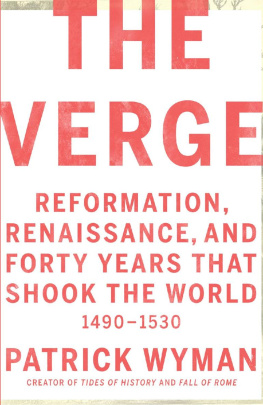
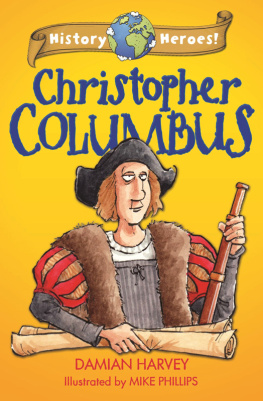

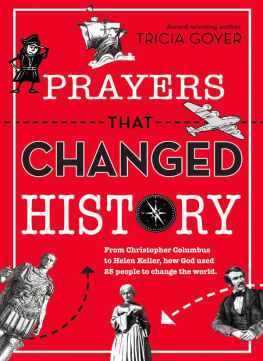
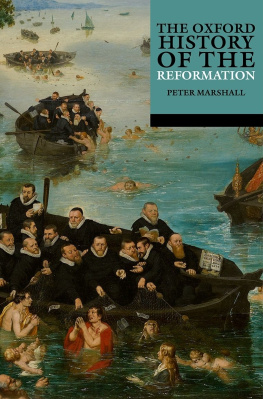
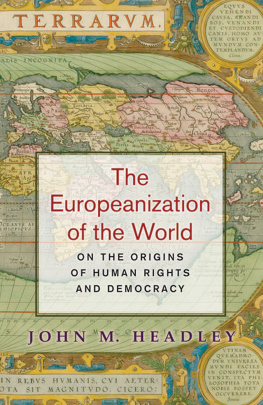
![Rountree Elizabeth - The story of the world: [history for the classical child]. Volume 2, The Middle Ages, [from the fall of Rome to the rise of the Renaissance]: test book and answer key](/uploads/posts/book/232759/thumbs/rountree-elizabeth-the-story-of-the-world.jpg)
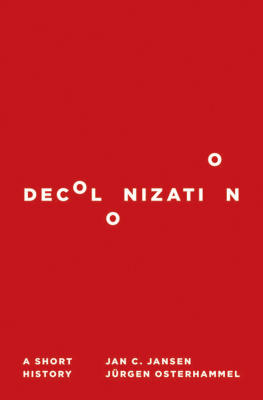
![G. Wyman (george Wyman) Bury - Pan-Islam [Microform]](/uploads/posts/book/60938/thumbs/g-wyman-george-wyman-bury-pan-islam-microform.jpg)
